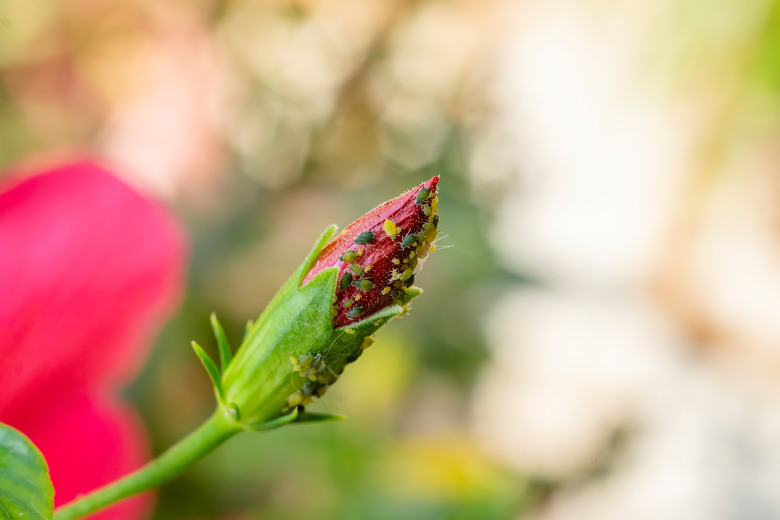Tiny Black Bugs Covering My Hibiscus Buds
We may receive a commission on purchases made from links.
These tiny black bugs on your hibiscus are most likely aphids, a common hibiscus pest. Aphids are frequently found on or near hibiscus flower buds and new leaves. The sheer number and contrasting color of many aphids makes them easy to spot, particularly during the spring as new growth occurs.
Although a mild aphid infestation will usually not prove fatal or even extremely damaging to a healthy shrub, weaker plants or a serious infestation can injure hibiscus. The key to dealing with aphids is to catch them early when they are easier to eradicate.
Identify an Aphid Pest
Identify an Aphid Pest
Aphids are small, pear-shaped insects with special mouthparts for sucking the vital juices from plants. Are they black? In fact, aphids come in just about every color, including black, white, yellow, and pink. Green aphids are also common on hibiscus plants.
You may have a hard time spotting a sole aphid on your hibiscus plant. But one aphid is not likely to do much damage. Still you can use a magnifying glass to positively identify it if you like. Look for a pair of small, pointed dual cornicles that protrude from their posteriors. More often, you notice aphids in groups or colonies, congregating on the underside of tender growth.
Identify Aphid Damage
Identify Aphid Damage
Since aphids use their mouthparts to suck sap from leaves, early damage shows up in the foliage. If a leaf is heavily infested, it may turn yellow or become cupped or distorted. Flowers buds, when subject to aphid attack, may harden, which will result in distorted flowers.
Aphids excrete sugary liquid in their wake, known as honeydew. It is a common growing medium for a black fungus known as sooty mold that can stunt the growth of the plant by interfering with photosynthesis. Honeydew also attracts ants.
Aphids can also carry viruses that may stunt or kill plants that they infect. Their ability to transmit disease is potentially more deadly than the damage inflicted from their feeding.
Monitor Regularly and Act Quickly
Monitor Regularly and Act Quickly
Aphids don't bite, sting, or otherwise hurt humans. They are defenseless, in fact, and can be controlled easily as long as there aren't too many of them. But they reproduce rapidly. This makes active monitoring of your hibiscus a must. Regularly examine new hibiscus growth for signs of infestation. A small colony of aphids may be hand-picked, crushed, or sprayed off plants using a stream of hose water.
Numerous insects feed on aphids, including ladybird beetles, green lacewings, syrphid fly larvae, and parasitic wasps. These beneficial predators will naturally be attracted to infestations but, if necessary, more of some species may be purchased. Ladybird beetles are available for purchase at many garden centers.
Use Mild Chemical Control
Use Mild Chemical Control
If natural means of control are not sufficient to reduce the aphid population on your hibiscus, consider using mild insecticides. Insecticidal soaps and horticultural oil can be very effective against aphids and will have little residual effect on hibiscus foliage, humans, pets, or beneficial insects.
If you decide to go this route, it's important to cover all parts of the plant. Aphids must be directly sprayed with these substances to work.
